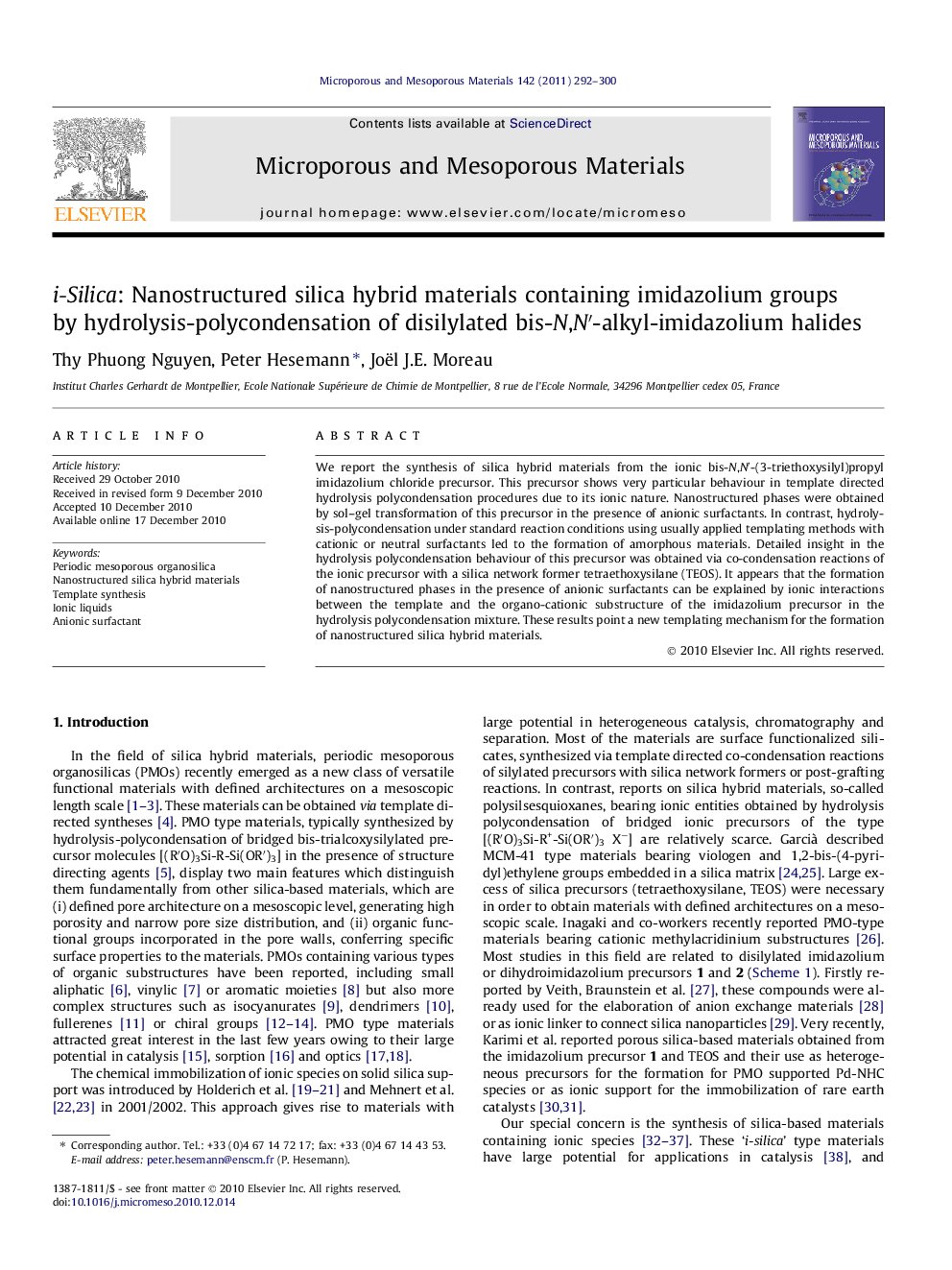| Article ID | Journal | Published Year | Pages | File Type |
|---|---|---|---|---|
| 74648 | Microporous and Mesoporous Materials | 2011 | 9 Pages |
We report the synthesis of silica hybrid materials from the ionic bis-N,N′-(3-triethoxysilyl)propyl imidazolium chloride precursor. This precursor shows very particular behaviour in template directed hydrolysis polycondensation procedures due to its ionic nature. Nanostructured phases were obtained by sol–gel transformation of this precursor in the presence of anionic surfactants. In contrast, hydrolysis-polycondensation under standard reaction conditions using usually applied templating methods with cationic or neutral surfactants led to the formation of amorphous materials. Detailed insight in the hydrolysis polycondensation behaviour of this precursor was obtained via co-condensation reactions of the ionic precursor with a silica network former tetraethoxysilane (TEOS). It appears that the formation of nanostructured phases in the presence of anionic surfactants can be explained by ionic interactions between the template and the organo-cationic substructure of the imidazolium precursor in the hydrolysis polycondensation mixture. These results point a new templating mechanism for the formation of nanostructured silica hybrid materials.
Graphical abstractThe hydrolysis polycondensation behaviour of the ionic bis-N,N’-(3-triethoxysilyl)propyl imidazolium chloride precursor has been investigated. Nanostructured phases were obtained by sol-gel transformation in the presence of anionic surfactants. This result can be explained by ionic interactions between anionic templates and the organo-cationic substructure of the imidazolium precursor in the hydrolysis polycondensation mixture.Figure optionsDownload full-size imageDownload as PowerPoint slideResearch highlights► Synthesis of original nanostructured surfactant/silica hybrid nanocomposites containing imidazolium substructures. ► Evidence for a new mechanism for the synthesis of nanostructured silica hybrid materials. ► Possibility to increase the amount of immobilized imidazolium groups within porous silica hybrid materials.
